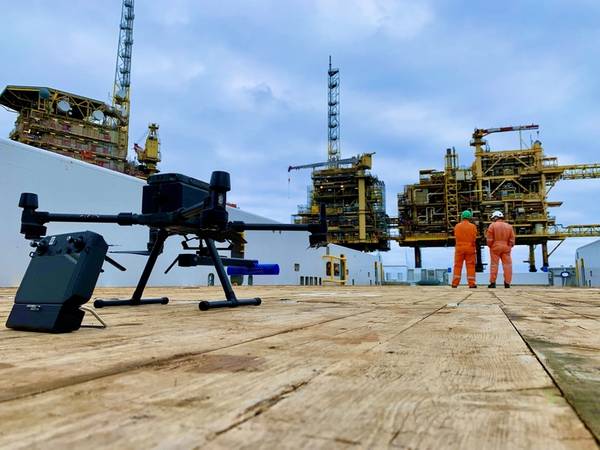
Technology first developed by the NASA Jet Propulsion Lab (JPL), which is being used to detect offshore methane emissions, is to be showcased at SPE Ōʶ„¶Ä³”ĄĻ»¢»ś Europe 2023 in Aberdeen next month.
SeekOps, the US-based sensor company, has deployed its drone-agnostic SeekIR solution, which uses technology initially created for the Mars Curiosity Rover, to gauge emissions across the North Sea.
In an energy sector first, by mounting an in-situ tunable diode laser absorption spectrometer (TDLAS) on a drone, high spatiotemporal methane emission measurement surveys have been conducted in an offshore environment.
The system is said to allow for cost-effective, safe, and accurate methane emissions quantification and overcomes challenges posed by fixed-wing crewed and uncrewed aerial vehicles (UAV) which have restrictive flight patterns.
Measuring methane emissions is particularly difficult in offshore environments, with other methods using satellites and aircraft having low success rates due to backscatter from water, clouds being in the field of view and a lack of resolution required to quantify one asset in a region where there are multiple in proximity.
The TLDAS technology was first developed by NASA’s JPL to look for evidence of microbial life and was extremely sensitive to methane enhancements. It has since been adapted for use across the energy sector and has been validated by the Methane Emissions Technology Evaluation Centre (METEC) in Colorado.
Brendan Smith, SeekOps Chief Technology Officer and Co-Founder, said: “With political, environmental and social pressures building, oil and gas operators are searching for ways to effectively reduce methane emissions. This forward-thinking solution combines two cutting-edge pieces of technology to provide companies with a modern and effective means of measuring their offshore methane emissions.”
The presentation at SPE Ōʶ„¶Ä³”ĄĻ»¢»ś Europe will highlight findings from surveys of five offshore assets, collecting both methane concentration and atmospheric conditions such as temperature, pressure and wind vector data.
It will form part of the Ōʶ„¶Ä³”ĄĻ»¢»ś Decarbonisation technical session on Friday, September 8, which begins at 10am in Conference Room 3. The event begins on Tuesday, September 5.
Kamel Ben-Naceur, SPE Ōʶ„¶Ä³”ĄĻ»¢»ś Europe Conference Chairman 2023, said: “As the energy transition ramps up pace, the development and adaptation of technologies to aid in the process will be key.
“This technical session will highlight a system that could have a potentially revolutionary impact on how methane emissions are measured offshore and forms part of a session which brings together the best minds in the field of offshore energy production to contribute to the development of effective strategies and solutions to reduce carbon emissions in the offshore sector.”



